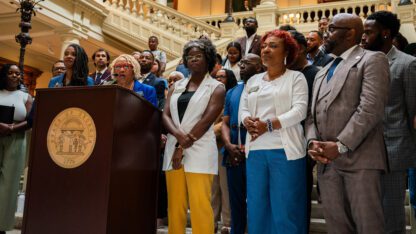Georgia’s Young Children At Risk For Undercount in 2020 Census

Georgia is one of the states most at risk for a miscount of kids in the 2020 Census, according to the Urban Institute.
Flickr Creative Commons
For the 2020 Census, 4.5 million children live in areas that are hard-to-count.
Georgia is one of the states most at risk for a miscount, according to the Urban Institute. That’s because of the state’s changing demographics. Children under the age of five are especially at risk of being undercounted.
In the last Census, one million children under the age of five were undercounted.
There are several reasons why. One is that hard-to-count kids live in hard-to-count families. That includes young families, immigrant families and multi-generational homes.
Locally, about one-third of Fulton County’s population resides in an area that’s hard-to-count. And nearly 40 percent of Dekalb County’s population live in such neighborhoods.
Statewide, 22 percent of Georgia’s population live in hard-to-count areas.
Mindy Binderman heads the Georgia Early Education Alliance for Ready Students. She says fear and misconceptions are one reason why parents may not include their children on the Census.
“They may fill it out for themselves but really not realize why that young children should be counted,” she says. “Sometimes they’re living in a household that’s larger than the landlord allows. And so someone doesn’t want to report that child for that reason.”
The Census is expected to send mailers to school districts about the count later this year. Binderman says similar efforts in the past raised awareness of the Census.
“They [the Census] estimate that about one in three families of school-aged children saw the materials from their children’s schools,” she says.
“Teachers are considered one of the best Census messengers,” said Rebecca Rice, a data manager with Georgia Kids Count. But she says children under five may not be in school yet.
Rice says an undercount can lead to a lack or services including not enough school buses and overcrowded classrooms.
“I think educators should absolutely be thinking about Census 2020,” Rice said.
The Census determines $675 billion in local funding. That includes money for food stamps, the national school lunch program and Head Start.








